
Gold is not vital to human existence, in fact, it has relatively few practical uses. But its unique atomic properties and its imperishable lustre have made it one of the world’s most coveted commodities. A long-standing symbol of beauty, wealth, and immortality; Egyptian pharaohs insisted on being entombed in the “flesh of the gods” and prospectors are still afflicted by “gold fever”.
Nearly every society throughout the ages has connected gold with an almost mythological power and the desire to possess gold has driven people to extremes, fueling wars and igniting conquests. But gold has never created dissention between Canada and the United States. The two countries, both large gold producers, share the world’s longest undefended and open border: 8,893 km (5,526 miles). And that’s not all, they also cordially share listings of publicly traded gold companies.
Many companies have their shares listed on multiple exchanges. Although these interlisted companies face additional expenses and regulatory requirements, the advantages often justify the costs. Interlisted companies gain access to more investors which can potentially increase a company’s liquidity and valuation. This recipe seems to be working for interlisted gold stocks as they were among the top performing equities in North America this week.
1. Golden Star Resources Ltd. (profile TSX:GSC – AMEX:GSS) + 26.4%
Golden Star is a mid-tier gold producer. The Company has two operating mines (Bogoso and Prestea) situated on the Ashanti Gold Belt in Ghana, West Africa. On January 5th, 2012 the company reported annual gold production of just over 300,000 ounces, down from the production levels reached in 2009 and 2010. Cash operating costs per ounce for their most recent quarter were $1,108 – up from $825 a year earlier. The increase in cash operating costs in 2011 was attributed to increasing prices of many key operating inputs: electric power, labour, cyanide, fuel, and reagents used in processing. The company has a NI 43-101 proven and probable reserves of 47.2 million tonnes grading 2.49 grams per tonne for 3.8 million ounces of gold in the ground at their Bogoso and Prestea mines.
With an annual exploration budget of roughly $20 million, Golden Star is busy with a portfolio of exploration properties including projects in Sierra Leone, Côte d’Ivoire, Burkina Faso, Niger, and Brazil. Shares of Golden Star closed Friday on the TSX at $2.22.
2. International Tower Hill Mines Ltd. (profile TSX:ITH – AMEX:THM) + 23.5 %
One-trick pony? Perhaps. But some think International Tower Hill has a pretty nice pony. The company’s Livengood property is located approximately 115 km northwest of Fairbanks, Alaska in the Tolovana mining district. International Tower Hill reports a NI 43-101 measured and indicated resource estimate of 16.5 million ounces of gold, using a 0.22 grams per tonne cut-off, at Livengood. The Livengood project is in transition from an exploration project to a development project as the company undertakes a pre-feasibility study for a large scale surface mining operation.
International Tower Hill is connected to the Cardero Mining Group. Despite the colossal collapse of sister company Dorato Resources last year (profile TSXV:DRI), a blow-up so bad Cardero no longer mentions the junior gold exploration company on their website, Cardero is considered to be one of Canada’s premier mining venture capital groups.
3. Exeter Resources Corp. (profile TSX:XRC – AMEX:XRA) + 21.0 %
Exeter Resources is focused on the exploration and development of gold properties within the Maricunga mining district in Chile. The company’s flag-ship Caspiche project is located 15 kilometres (8 miles) south of Kinross Gold’s 9 million ounce Refugio gold mine and 10 kilometres (6 miles) north of the 26 million ounce Cerro Casale gold project owned jointly by Barrick (75%) and Kinross (25%). This week, Exeter announced the results of a prefeasibility study for their Caspiche project which returned a pre-tax net present value of US$2.8 billion (5% discount rate) and an average estimated operating costs of US$606 per ounce gold equivalent. The study was based on proven and probable reserves of 19.3 million ounces of gold and 4.6 billion pounds of copper. Exeter closed the week at CDN$3.70 a share.
4. New Gold Inc. (profile TSX:NGD – AMEX:NGD) + 17.2 %
Companies can grow in two ways – organically or through acquisition – New Gold appears to be focused on the latter. The company completed a number of strategic acquisitions last year, most recently, buying Silver Quest for $166 million on December 23, 2011. The deal was done, in essence, to consolidate New Gold’s ownership of the Blackwater gold project which it acquired earlier in the year with the purchase of Richfield Ventures. Following the Richfield acquisition, Canaccord analyst, Steven Butler, issued a “buy” rating and raised his target to $14.50, “We reiterate our rating on New Gold following the completion of the Richfield Ventures acquisition. Our rating is based on growth at a reasonable price, the resource and valuation upside associated with the Blackwater project.” Shares of New Gold closed on Friday at CDN$11.74, up $0.30, punctuating a good week for this interlisted gold company.
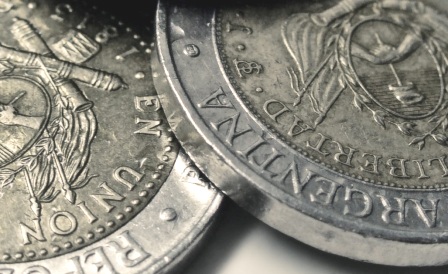
Silver stocks and silver bullion have been on the upswing over the last month – the shiny white metal has tacked on more than 20 percent. Today, the Global X Silver Miners ETF (NYSE:SIL) advanced $0.86, or 3.5%, hitting a high of $24.71 per share before retreating back to the $24.34 mark. Investors may be taking safe haven in precious metals after the European financial crisis asserted itself again this week.
In a recent report, The Silver Institute stated silver production has also been increasing lately. According to the institute, the growth in silver production is being driven by new projects in Mexico and Argentina, “This change came about as a result of increased production in primary silver mines and as a by-product of lead/zinc mining. For the first time, Mexico eclipsed Peru as the world’s largest silver producing country.” China, Australia and Chile round out the top five silver producers. The report also highlighted that industrial fabrication using silver is expected to increase by 37 percent between 2010 and 2015. The anticipated increase will shift demand from approximately 488 million ounces to 666 million ounces. Despite the increase, TD Securities lowered its price target for silver in 2012 from $40 to $35 this week.
Silver guru David Morgan made an appearance at Vancouver’s Cambridge House Mining Conference on Monday. Morgan is bullish on silver stating the increase in global money supply is a “pervasive issue” within the financial markets. Going forward, he thinks the real opportunities lie in the mid-tier silver producers (complete interview below).
Pan American Silver (profile TSX:PAA) and Minefinders (profile TSX:MFL) made headlines on Monday when the companies announced they reached an agreement for Pan American to acquire Minefinders for $15.60 per share, valuing the transaction at $1.5 billion (CDN). Pursuant to the deal being approved by each companies’ shareholders, Geoff Burns, President and CEO of Pan American, stated, “Given the location of Minefinders’ assets, we believe this acquisition is logical and consistent with Pan American’s vision to become the largest, low-cost primary producer of silver in the world.” Minefinders also controls significant gold assets.
Following the announcement, GMP Securities lowered its price target on Pan American to $40.50 from $46.50 as analyst Craig West noted the dilutive nature of the transaction from an earnings perspective. Analysts were more positive on the deal from Minefinders perspective. Desjardins Securities analyst, Brian Christie, said in a note to clients, “We view the proposed transaction positively, as the offer represents a significant and immediate premium to Minefinders’ shareholders.”
Today, Vancouver-based Fortuna Silver Mines (profile TSX:FVI) said its 2011 silver production jumped 31 percent and forecast nearly 50 percent jump in the metal’s output this year. The company cited expansion at its San Jose mine in Mexico will increase output and lower its silver production cost in 2012. For 2012, the company provide production guidance of 3.7 million ounces of silver and 17,400 ounces of gold. Earlier this week, First Majestic Silver (profile TSX:FR) announced the completion of its La Parrilla mill expansion to 2,000 tonnes per day. Keith Neumeyer, President & CEO stated, “We are very pleased with the completion of this major new expansion at La Parrilla. Our Mexican construction team should be recognized for their hard work and tireless efforts and should be congratulated for completing the construction while keeping the older mill operating.” MiningFeeds.com recently connected with Mr. Neumeyer – CLICK HERE – for the exclusive interview.
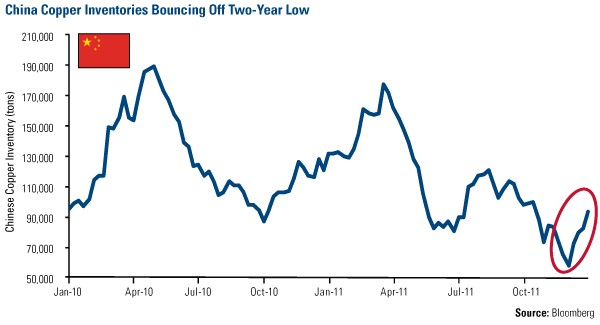
Base metals were the laggards among commodities last year, with copper one of the worst performers, losing 21 percent.
Global consumption of copper increased only 4 percent in 2011, which is lower than the 10 percent growth in 2010, but higher than the decade-average of around 3 percent, says Macquarie Research. China’s consumption of copper—which makes up 40 percent of the global demand—was a primary reason for decreased consumption, as the country was drawing down on its own supply throughout the year.
This can’t continue forever, Macquarie says, adding that “demand made on new supply direct from producers would need to rise, with positive implications for prices.” Europe’s largest copper fabricator agrees with that sentiment, indicating that it anticipated China’s copper demand would be strong in 2012, according to Barclays.
A recent rise in copper imports is likely the result of restocking China’s depleted copper inventories. As is typical for China, after the metal fell in price last fall, the world’s largest buyer of the metal advantageously scooped up copper to replenish its cupboard, says Barclays Capital. As shown below, copper inventories into China reached a record low in 2011, but have sharply reversed recently.
An increase in copper demand places pressure on the supply side, which continues to experience shortfalls in mine output versus forecasts. These are caused by a variety of factors, such as weather, labor strikes, or simply a poor grade deposit. While Macquarie says there’s a possibility the world’s two largest copper mines, the Los Bronces mine in Indonesia and Peru’s Escondida mine, could deliver year-over-year increases in production, it concludes “it is highly unlikely that miners will succeed in delivering this level of additional output in total.”
While Chinese demand growth for commodities is not expected to be as robust as it has been historically, demand is expected to pick up throughout 2012. As confidence returns, Macquarie says there should be “a slow gradient of recovery in the near term before gathering pace into the mid-year.”
From the article, “It May Take a Dragon to Breathe Fire Into the Markets” by Frank Holmes. Frank Holmes is chief executive officer of U.S. Global Investors – a registered investment adviser that manages approximately $2.8 billion. The information provided herein has been provided to MiningFeeds.com by the author and, as such, is subject to our disclaimer: CLICK HERE.

In my mind’s eye, I have this picture of David Brown; with a glass of New Year’s champagne in one hand and the last bars of ‘Auld Lang Syne’ ringing in his ears, wondering what 2012 would bring him. A brutal self- assessment of his leadership of Impala Platinum (profile IMPUY.PK) might have provided the daunting answer: “Different year; same problems.”
A quick look at Implats’ prospects for 2012 gives one a sense of déjà vu. Zimbabwe, although its fortunes are not priced into the share, continues to be the basket case it has always been. Worse, there’s no sign that business conditions there are going to be clarified any day soon. In fact, they could become more complicated as Zanu-PF, Zimbabwe’s ruling party, considers shifting elections a year earlier to 2012. This would mean a resolution on indigenisation – black economic empowerment legislation – might have to wait until the completion of the election race.
Secondly, platinum mining cost controls are going to be predictably difficult to rein in. According to some estimates, ‘Section 54’-related work stoppages following underground fatalities on South Africa’s platinum mines will continue to hammer production; raising costs. We all want safety to improve, but the zero-fatality goal is still a dream. No-one wants to admit it, but there’s no end in sight to underground fatalities on South African deep level mines. In the first week of January, while most of us were blowing the dust off our laptops, two miners had been killed on two listed South African (gold) mines.
Additionally, labour expectations and union dominance will be a fixture in South African mining for years to come. Combine that with the likelihood that industrial demand globally will be stunted, at best, in 2012 – placing downward pressure on the platinum price – and you can see why Brown would come to the conclusion that he’d done what he hoped to do at Implats, and could do no more. As he commented to Miningmx earlier this week, he’s due some “quiet time.”
Knowing when to call it a day is not easy, particularly as Brown has played a relatively solid innings while in charge of Implats. Take the last five years, for instance. Impala’s share price performance is flat but, relative to Anglo Platinum, it has outperformed the company it used to call “Number One.” Even now, Impala is the preferred platinum stock for some of the mining analysts Miningmx consulted.
Brown certainly dealt with empowerment in South Africa much better than Anglo Platinum which, as we speak, is trying to re-piece its empowerment deal with Anooraq Resources, while its Mvelaphanda Resources platinum experiment is now part of corporate history.
From the article entitled, “End of a Well Trod Road for Impala’s Brown” by David McKay of Miningmx. Miningmx is a leading online publication providing news, editorial and analysis on the African resources sector. The information provided herein has been provided to MiningFeeds.com by the author and, as such, is subject to our disclaimer: CLICK HERE.

Canadian fund manager Eric Sprott said this week he was bullish on precious metals and bearish on cyclical commodities like base metals. Sprott said, “I am not bullish on cyclical commodities such as iron ore, coal, steel, lead and zinc because I am worried about this economic contraction that everybody is talking about,” during a phone interview from his Toronto office. Sprott expects gold to hit a record over $2,000 an ounce this year and thinks silver will rally to an all-time high of more than $50 an ounce. Sprott also stated, “I think there is more upside to the gold-mining stocks. Last year, the stocks were absolutely crushed when the price of gold went down. But when gold goes back up, the stocks will provide a better return.”
According to data compiled by Bloomberg, the S&P 500 is up 2.9 percent in 2012 for its best start to a year since 2003. Equities posted gains as manufacturing in the New York region expanded in January at the fastest pace in nine months. Spanish borrowing costs fell at a bond auction as investors ignored S&P downgrades last week and German investor-confidence rose dramatically. Although China’s economy expanded at the slowest pace in 10 quarters, there is pressure on Premier Wen Jiabao to ease monetary policy which is expected to help the markets. Alan Gayle, a senior strategist at RidgeWorth Capital Management in Richmond, Virginia, which oversees about $47 billion summed it up nicely when he stated, “the economic data broadly exceeded expectations”.
As a result, base metal stocks have done quite well over the past few months. Many issuers are up significantly after being hit hard in 2011 due to the European debt crisis and global economic slow-down. First Quantum Minerals (profile TSX:FM), after touching a 52 week low in October of $12.60 a share, has reversed the course and closed this week at $22.55 – a significant gain of 79% despite the fact the company’s shares were actually down $1.35 on Friday. Early in 2012, First Quantum settled its dispute with Eurasian Natural Resources (profile LSE:ENRC) reaching a US$1.25-billion agreement. Another strong performer has been Lundin Mining (profile TSX:LUN). Lundin’s shares have rallied off of Q4, 2011 lows ($3.20 per share) reaching a recent high on Thursday of $5.30 which marked a 65.6% gain over the past 2 months. Like First Quantum, shares of Lundin Mining sold-off on Friday losing 4% on the day. TSX Venture base metals junior Goldbrook Ventures (profile TSXV:GBK) bucked the bearish trend on Friday gaining 44.9% on the day after it announced a “friendly” take-over offer of $0.39 per share from Jien Nickel Industry Co.
Gold and silver stocks haven’t done quite as well as their industrial cousins. As we closed out 2011, gold and silver bullion retested recent lows while many gold and silver producers did the same. But lately, precious metals are on the comeback trail. Silver, in particular, was up sharply on Friday gaining 4.95% closing the day at $32.14 an ounce.
Gold equities, on the other hand, have been somewhat more difficult to figure out. In November, one prominent analyst said the valuation of Kinross Gold (profile NYSE:KGC) was “ridiculous“. BMO Capital Markets analyst David Haughton calculated that, while trading at CDN$13.45 per share, the company was valued at just 0.7 times net present value (assuming a 10% discount rate). This was well below the average for senior gold producers which, at the time, were averaging 1.1 times net present value – numbers Haughton felt were “pretty affordable”. This week Kinross was the big percentage loser on the NYSE and TSX down 19.8%. The company announced on Tuesday that it would take six to nine months more than expected to study and plan its Tasiast mine in Mauritania, delaying development and possibly negatively effecting production. TD Securities analyst Greg Barnes summarized the company’s woes in a research note saying, “It seems that capital and operating costs are facing significant upward pressure”. Kinross Gold’s shares closed on Friday at $10.36 on the TSX Exchange.
On the silver-side, worth a mention was MAG Silver (profile TSX:MAG). The company’s shares were up 9.6% on Friday after the board approved a collective 89 percent increase in exploration spending on their 100% owned Cinco de Mayo project and on their Juanicipio joint venture project with Mexican mining giant Fresnillo (profile LSE:FRES). MAG Silver is operating in Mexico and certainly has a significant partner in Fresnillo – the world’s largest silver producer.
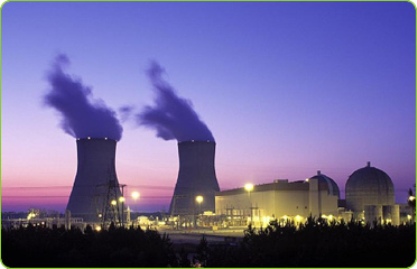
As we settle into a new year, one sector has demonstrated it’s full of energy: uranium. After what was an unequivocal terrible year in 2011, the sentiment towards uranium appears to be changing. In late December, Japanese governor of Aomori, Shingo Mimura announced he approved new safety measures by five nuclear-related companies, including J-Power and Japan Nuclear Fuel Ltd (JNFL), operator of the Rokkasho nuclear reprocessing plant, which is now operating on a test basis. And, Prime Minister Yoshihiko Noda has said that nuclear power could play a role in Japan for decades, with measures to improve safety, after the March 11, 2011 earthquake triggered massive radioactive material leakage in the Fukushima Daiichi plant.
Coupled with today’s announcement that Japan is likely to cut Iranian crude purchases in about three months, is the shadow finally being removed from the uranium sector? U.S. officials are touring Asia in an attempt to muster support for sanctions aimed at starving Iran of oil revenue and their arm-twisting might be working. During a regular press briefing Akihiko Tembo, president of the Petroleum Association of Japan (PAJ) stated, “I think each buyer is considering this in a practical way and making efforts to reduce nominations (for Iranian crude) as much as possible and find alternatives.”
The shift in market sentiment appears to be having an impact on uranium stocks. Mega Uranium Ltd. (profile TSX:MGA) is one of the top performing stocks this week and is currently trading at $0.36 up $0.09 (33.3%) from last Friday’s close. Earlier this year, Mega Uranium entered into a letter of intent with Titan Uranium Inc. (profile TSXV:TUE) to purchase all of Titan’s Canadian exploration properties, in exchange for 10 million common shares of Mega. The proposed acquisition includes 23 projects covering 1.2 million acres located in the Athabasca basin of Saskatchewan, the Thelon basin project located in Nunavut in which Mega and Titan are currently 51/49 joint venture partners, and the South Fork project in south-western Saskatchewan in which Mega and Titan currently each hold a 25 percent interest.
Another uranium stock on the move is Crosshair Energy Corp. (profile TSX:CXX) up 10.7% this morning on volume of 260,000 shares. Crosshair announced today that indicated resources at its uranium project in Wyoming, United States were up 36 percent. In mid-December, MiningFeeds connected with Stewart Wallis, President & CEO of Crosshair Energy, CLICK HERE for that exclusive interview. Crosshair, which develops uranium, vanadium and gold projects in North America, said indicated resources at its Bootheel project in southern Wyoming were at 1.48 million pounds of uranium oxide. Crosshair has a 75 percent interest in the project, with the rest being owned by Ur-Energy Inc. (profile TSX:URE). Ur-Energy, another company recently covered by MiningFeeds, was featured in the article “Uranium Stocks to Watch in 2012” – CLICK HERE – to read more.
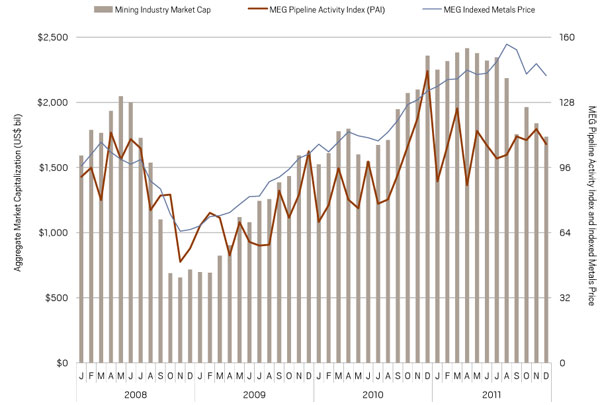
Metals Economics Group (MEG) Pipeline Activity Index (PAI) increased in November to reach its highest level since March 2011, thanks to another record month of significant drill results and improved financings, before falling again in December as explorers paused for the holiday season. December’s drop was mitigated by an end-of-year financing push that included a significant amount of debt raised—particularly for base metals.
The industry’s aggregate market cap declined in November and December to finish 2011 at $1.74 trillion—the lowest since July 2010. Market caps have now been under $2 trillion for four consecutive months, bringing 2011’s monthly average down to $2.16 trillion.
The number of significant precious and base metals drill results showed an increase for the seventh consecutive month in November, before slowing for the holiday season. Although December was the lowest one-month total since April 2011, the number of announcements was still higher than any single month in 2010.
Compared with 2010, there was a marked increase in the total number of initial resource announcements in 2011. If metals prices hold—particularly gold—MEG expects the trend to continue upwards in 2012, given the significant increase in drilling reported throughout 2011.
Although not nearly to the scale of 2010, the year-end financing push helped the number of significant financings (US$2 million minimum) completed by junior and intermediate companies rebound. The almost $2 billion raised for base metals in November-December included $1.46 billion in debt—by far the most debt secured for base metals or gold in any bimonthly period since the Industry Monitor began in 2008. Although gold financings had a much more balanced distribution, the $452 million of debt raised in December is also the highest one-month total for gold in the past four years.
The MEG Pipeline Activity Index (PAI) measures the level and direction of overall activity in the supply pipeline, incorporating significant drill results, initial resource announcements, project development milestones, and significant financings into a single comparable index.
From the article entitled, “Metals Economics Group Pipeline Activity Index, January 2012” by Metals Economics Group. Metals Economics Group (MEG) is a trusted source of global mining information and analysis. With three decades of comprehensive information and analysis, MEG has an unsurpassed level of experience and historical data. The information provided herein has been provided to MiningFeeds.com by the author and, as such, is subject to our disclaimer: CLICK HERE.
History says that government policy shifts can have a tremendous affect on the economy and the markets. While no one can predict the future, you can use probability in your favor. For example, Chinese stocks have historically moved with money supply. In the webcast, Analyst Xian Liang showed the chart below plotting the year-over-year money supply in China against domestic B-shares (represented by the MSCI China Index) since the end of 2000.
The Chinese government is known for acting decisively in making policy changes to steer its economy in the right direction. In 2009, the growth in money supply was at an 11-year high of 30 percent after the government lowered the required reserve ratio (RRR) for major banks. Adjusting the reserve requirement is important inflation-fighting tool in China’s monetary policy. The lower the reserve requirement, the more money banks are able to lend out.
Throughout 2011, due to concerns about inflation, China had been raising the reserve requirement for banks and interest rates. This action reduced money supply to the low we see in the chart. This December, China shifted its stance as slow growth became a risk and inflation slowed. This action should increase money supply, and encourage markets, going forward.
China also recently announced an earlier-than-expected windfall profit tax cut for its oil companies. This special oil income levy raises the level at which a barrel of oil is taxed, going from $40 to $55. This $15 difference essentially translates to a substantial tax break for oil companies and extra money in their coffers.
Research firm Jefferies expected the tax adjustment, but thought that it would happen at the end of 2012. With this tax cut, it appears the government acknowledges the need for Chinese upstream oil companies to increase their cash flow so that they can increase domestic production, says Jefferies.
This tax cut was closely followed by analysts, and was seen as a “big positive” for China’s oil companies, specifically CNOOC, PetroChina and Sinopec, says Citigroup Global Markets. The market promptly responded positively, with each stock rising on the news.
As of December 31, the JP Morgan Global Manufacturing Purchasing Managers’ Index (PMI) crossed above the three-month moving average. Going back to the inception of the index in 1998, there have been 20 occurrences when the one-month number crosses above the three-month. When this has happened, it’s signaled higher prices for many commodities, especially oil, copper, and to less of a degree, materials and energy.
For copper, historically, 90 percent of the time, the price was positive over the next three months, with a median return of 10 percent over the following three months.
We believe the winds are shifting to bring needed relief to global investors. We’ve seen improving economic data from the U.S. lately, and this positive news from the world’s largest economy, along with an improving China—the world’s most populated country—offsets the negativity in Europe.
From the article, “Have Winds Shifted to Provide Relief to Investors?” by Frank Holmes. Frank Holmes is chief executive officer of U.S. Global Investors – a registered investment adviser that manages approximately $2.8 billion. The information provided herein has been provided to MiningFeeds.com by the author and, as such, is subject to our disclaimer: CLICK HERE.
PRESSS RELEASE.
Mining Nerds and Highgrade Review join forces to form MiningFeeds.
MiningFeeds is the internet’s #1 financial website featuring information, news and editorial focused on the mining sector. A gateway to some of the world’s most dynamic mining companies, the site is widely used by investors, analysts and other industry professionals.
MiningFeeds draws its content from leading industry publications and provides the most comprehensive information available – anywhere. Not only is MiningFeeds the best information resource on public mining companies and the mining sector, it’s also one of the top-traffic mining websites with between 50,000 and 100,000 monthly visitors.
How did we get so big so fast? MiningFeeds originated from the merger of two highly regarded online mining publications: Mining Nerds and Highgrade Review.

2012 is upon us and it was a good opening week for the both the markets and mining companies alike. On the heels of intense tax-loss selling in December despite positive economic data hitting the headlines as 2011 came to a close, nothing seemed to stem the tide of December tax-loss selling as many mining issuers set new lows to close out the year. 2011 left many investors wondering what’s in store for the upcoming year? But in the first week of 2012 few stocks suffered a New Year’s hang-over and the markets are off to a bang.
Perhaps the recent positive move in the mining investment sector was driven by “smart money”. Wealthy investors plan to increase their allocations in commodities and decrease their cash holdings this year, according to a survey released on January 5th, 2012 by the Institute for Private Investors (IPI). IPI’s member survey confirmed about 48 percent of respondents said they plan to add to commodities investments during 2012 while about 45 percent plan to increase real-estate holdings. IPI members are families with at least $30 million in invested assets. “It’s part of that whole movement toward actually owning real assets,” Mindy Rosenthal, executive director of IPI, said in an interview. “They’re looking at going back to the old school way of making money.”
Regardless of who’s buying, we look back on the first week that was in 2012 and highlight three newsworthy notes to start the year.
1. Rare Earths lead the way.
Without question, the big story so far this year is the big move in rare earth stocks. A sector that was clearly down as we ended 2011 was evidently not out. Rare Element Resources Ltd. (TSX:RES – AMEX:RES) was the biggest gainer for the week chalking up a hefty 76.7% gain closing the week at $5.83 up $2.53. Rare Element Resources released the results of their updated NI 43-101 mineral resource estimate of rare-earth elements plus yttrium for the Bull Hill area of the company’s Bear Lodge project in Wyoming. The updated resource estimate consists of 6.8 million tons averaging 3.75 per cent rare-earth oxides in measured and indicated categories up from last year’s estimate of 4.9 million tons averaging 3.77 per cent REO. The Rare Element news sparked the sector. Avalon Rare Metals Inc. (TSX:AVL – AMEX:AVL) moved up 20.3% on the week closing at $2.90 while venture board issuer Quest Rare Metals Ltd. (TSX-V: QRM – AMEX:QRM) up $0.57 this week to $2.79, a move of 20.4%.
2. Gold is good again: up $52 an ounce.
This week marked a resurgence in the price of gold with some gold-bugs claiming the market appears to have bottomed, technicals are improving, and valuations of both producers and juniors are quite compelling. Gold was up and Sulliden Gold Corporation Ltd. (TSX:SUE) was the week’s big golden-gainer on the TSX moving up 23.6% to $1.52. On Wednesday, the company announced drill results including a 53.8 metre intersection of 0.85 gram per tonne (g/t) gold and 71.4 g/t silver in oxides from its Shahuindo property in northern Peru. While on the Venture Board, a junior penny stock lead the way. Quia Resources Inc. (TSXV:QIA) is undertaking a $3.3 million unit financing at $0.15 and is undoubtedly making some noise with 681,930 shares traded hands: up 68.8% closing the week at $0.27. Quia Reources is focusing its exploration activities on the San Lucas gold belt in Colombia.
3. Potash giants post big absolute losses on Friday.
Potash Corporation of Saskatchewan Inc. (TSX:POT – NYSE:POT). Potash Corp. was down $1.02 on Friday, or 2.32 per cent, closing the day at $42.94 on volume of 2,176,223 shares. The company said Friday it plans a four-week production shutdown starting next month at its Allan mine in the Saskatoon area. “It’s what we call an inventory adjustment,” said Bill Johnson, senior director, public affairs. While counterpart Agrium Inc. (TSX:AGU – NYSE:AGU) was down $1.30 marking a 1.8% decline on volume of over half a million shares. Both stocks posted modest gains for the week.
If you would like to receive our free newsletter via email, simply enter your email address below & click subscribe.
CONNECT WITH US
Tweets
Tweet with hash tag #miningfeeds or @miningfeeds and your tweets will be displayed across this site.
MOST ACTIVE MINING STOCKS
Daily Gainers
 Lincoln Minerals Limited Lincoln Minerals Limited |
LML.AX | +125.00% |
      |
GCR.AX | +33.33% |
      |
CASA.V | +30.00% |
      |
AHN.AX | +22.22% |
      |
ADD.AX | +22.22% |
      |
AZM.V | +21.98% |
      |
NSE.V | +21.05% |
      |
DYG.V | +18.42% |
      |
AAZ.V | +18.18% |
      |
GLA.AX | +17.65% |

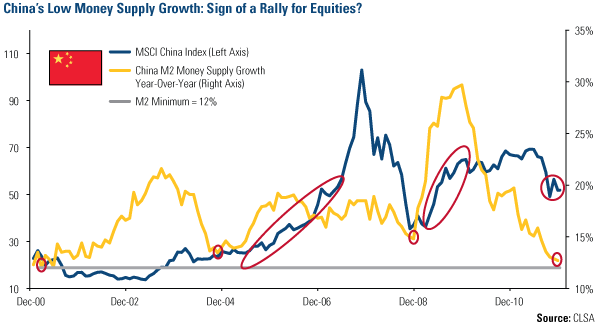
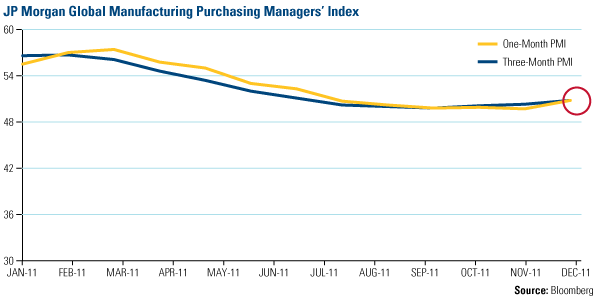
 Follow us on Twitter
Follow us on Twitter Become our facebook fan
Become our facebook fan








